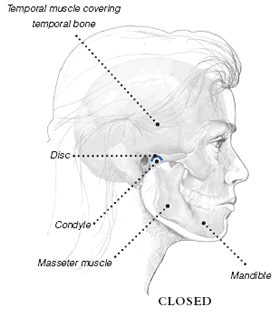Iggy Azalea’s Aching Jaw

Australian Fancy rapper Iggy Azalea vows to take better care of herself in 2015. Tweeting to her fans New Year’s Eve that she had recently been diagnosed with TMJ problems. TMJ stands for the temporomandibular joint, a joint in the jaw.
Iggy, 24, whose real name is Amethyst Amelia Kelly, added:
“I’m gonna make more of an effort to take care of myself in 2015, stay away from all the drama & hopefully not have any flair ups.
I don’t think western medicine all the way acknowledges what a huge toll mental stress takes on our bodies. But I do believe it is a factor… Anyhow I don’t think it will ever prevent me from doing anything I want to but it has made me realize it’s important to look after yourself.”
Azalea spent New Year’s Eve in Las Vegas with boyfriend Nick Young at the Brittany Spears’ Piece of Me concert. She heads back to the studio next week to begin work on her second album.
What is TMJ?
Temporomandibular joint and muscle disorders, commonly called “TMJ,” are a group of conditions that cause pain and dysfunction in the jaw joint and the muscles that control jaw movement. We don’t know for certain how many people have TMJ disorders, but some estimates suggest that over 10 million Americans are affected. The condition appears to be more common in women than men.
What is the temporomandibular joint?
The temporomandibular joint connects the lower jaw, called the mandible, to the bone at the side of the head—the temporal bone. If you place your fingers just in front of your ears and open your mouth, you can feel the joints. Because these joints are flexible, the jaw can move smoothly up and down and side to side, enabling us to talk, chew and yawn. Muscles attached to and surrounding the jaw joint control its position and movement.


When we open our mouths, the rounded ends of the lower jaw, called condyles, glide along the joint socket of the temporal bone. The condyles slide back to their original position when we close our mouths. To keep this motion smooth, a soft disc lies between the condyle and the temporal bone. This disc absorbs shocks to the jaw joint from chewing and other movements.
The temporomandibular joint is different from the body’s other joints. The combination of hinge and sliding motions makes this joint among the most complicated in the body. Also, the tissues that make up the temporomandibular joint differ from other load-bearing joints, like the knee or hip. Because of its complex movement and unique makeup, the jaw joint and its controlling muscles can pose a tremendous challenge to both patients and health care providers when problems arise.
What are TMJ Disorders?
Disorders of the jaw joint and chewing muscles—and how people respond to them—vary widely. Researchers generally agree that the conditions fall into three main categories:
- Myofascial pain involves discomfort or pain in the muscles that control jaw function.
- Internal derangement of the joint involves a displaced disc, dislocated jaw, or injury to the condyle.
- Arthritis refers to a group of degenerative/inflammatory joint disorders that can affect the temporomandibular joint.
A person may have one or more of these conditions at the same time. Some people have other health problems that co-exist with TMJ disorders, such as chronic fatigue syndrome, sleep disturbances or fibromyalgia, a painful condition that affects muscles and other soft tissues throughout the body. These disorders share some common symptoms, which suggests that they may share similar underlying mechanisms of disease. However, it is not known whether they have a common cause.
Rheumatic disease, such as arthritis, may also affect the temporomandibular joint as a secondary condition. Rheumatic diseases refer to a large group of disorders that cause pain, inflammation, and stiffness in the joints, muscles, and bone. Arthritis and some TMJ disorders involve inflammation of the tissues that line the joints. The exact relationship between these conditions is not known.
How jaw joint and muscle disorders progress is not clear. Symptoms worsen and ease over time, but what causes these changes is not known. Most people have relatively mild forms of the disorder. Their symptoms improve significantly, or disappear spontaneously, within weeks or months. For others, the condition causes long-term, persistent and debilitating pain.
What causes TMJ disorders?
Trauma to the jaw or temporomandibular joint plays a role in some TMJ disorders. But for most jaw joint and muscle problems, scientists don’t know the causes. Because the condition is more common in women than in men, scientists are exploring a possible link between female hormones and TMJ disorders.
For many people, symptoms seem to start without obvious reason. Research disputes the popular belief that a bad bite or orthodontic braces can trigger TMJ disorders.
There is no scientific proof that sounds—such as clicking—in the jaw joint lead to serious problems. In fact, jaw sounds are common in the general population. Jaw noises alone, without pain or limited jaw movement, do not indicate a TMJ disorder and do not warrant treatment.
What are the signs and symptoms?
A variety of symptoms may be linked to TMJ disorders. Pain, particularly in the chewing muscles and/or jaw joint, is the most common symptom. Other likely symptoms include:
- radiating pain in the face, jaw, or neck,
- jaw muscle stiffness,
- limited movement or locking of the jaw,
- painful clicking, popping or grating in the jaw joint when opening or closing the mouth,
- a change in the way the upper and lower teeth fit together.
How are TMJ disorders treated?
Because more studies are needed on the safety and effectiveness of most treatments for jaw joint and muscle disorders, experts strongly recommend using the most conservative, reversible treatments possible. Conservative treatments do not invade the tissues of the face, jaw, or joint, or involve surgery. Reversible treatments do not cause permanent changes in the structure or position of the jaw or teeth. Even when TMJ disorders have become persistent, most patients still do not need aggressive types of treatment.
Conservative Treatments
Because the most common jaw joint and muscle problems are temporary and do not get worse, simple treatment may be all that is necessary to relieve discomfort.
Self-Care Practices
There are steps you can take that may be helpful in easing symptoms, such as:
- eating soft foods,
- applying ice packs,
- avoiding extreme jaw movements (such as wide yawning, loud singing, and gum chewing),
- learning techniques for relaxing and reducing stress,
- practicing gentle jaw stretching and relaxing exercises that may help increase jaw movement. Your health care provider or a physical therapist can recommend exercises if appropriate for your particular condition.
Pain Medications
For many people with TMJ disorders, short-term use of over-the-counter pain medicines or nonsteroidal anti-inflammatory drugs (NSAIDs), such as ibuprofen, may provide temporary relief from jaw discomfort. When necessary, your dentist or physician can prescribe stronger pain or anti-inflammatory medications, muscle relaxants, or anti-depressants to help ease symptoms.
Stabilization Splints
Your physician or dentist may recommend an oral appliance, also called a stabilization splint or bite guard, which is a plastic guard that fits over the upper or lower teeth. Stabilization splints are the most widely used treatments for TMJ disorders. Studies of their effectiveness in providing pain relief, however, have been inconclusive. If a stabilization splint is recommended, it should be used only for a short time and should not cause permanent changes in the bite. If a splint causes or increases pain, or affects your bite, stop using it and see your health care provider.
The conservative, reversible treatments described are useful for temporary relief of pain – they are not cures for TMJ disorders. If symptoms continue over time, come back often, or worsen, tell your doctor.
Botox
Botox® (botulinum toxin type A) is a drug made from the same bacterium that causes food poisoning. Used in small doses, Botox injections can actually help alleviate some health problems and have been approved by the Food and Drug Administration (FDA) for certain disorders. However, Botox is currently not approved by the FDA for use in TMJ disorders.
Results from recent clinical studies are inconclusive regarding the effectiveness of Botox for treatment of chronic TMJ disorders. Additional research is under way to learn how Botox specifically affects jaw muscles and their nerves. The findings will help determine if this drug may be useful in treating TMJ disorders.
Source: National Institute of Dental and Craniofacial Research



























0 comments